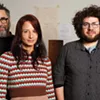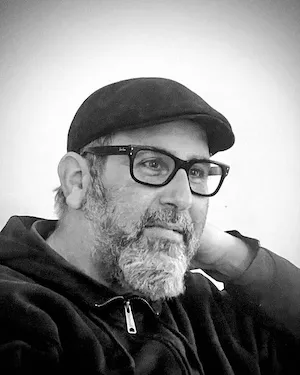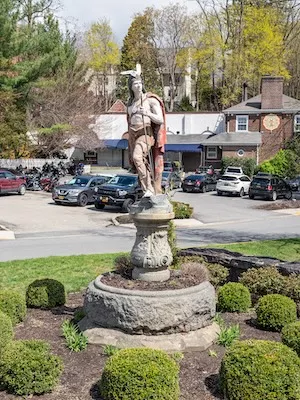Brattleboro artist Jonathan Gitelson has won the 2025 Vermont Prize, organizers announced on Monday. The visual art prize, established in 2022 by the Brattleboro Museum & Art Center, Burlington City Arts, the Current gallery in Stowe and the Hall Art Foundation in Reading, recognizes one artist annually and awards them $5,000.
Directors and curators at those organizations — Sarah Freeman, Heather Ferrell, Rachel Moore and Maryse Brand, respectively — selected the winner, joined by guest juror Denise Markonish, the former chief curator at MASS MoCA in North Adams, Mass., who in June became chief curator at the Madison Square Park Conservancy in New York City. Gitelson joins previous winners Will Kasso Condry, Terry Ekasala and Sarah Amos.
Gitelson is a professor of art and design at Keene State College in New Hampshire with a background in photography. But his work isn’t limited to that medium, instead ranging from artist books to research-based practice to radio shows — wherever a project takes him. “The one connecting thing,” he said in a phone interview, “is an interest in the minutiae of everyday life.”
Brattleboro residents may remember Gitelson’s multiyear collaborative project “Sonic Blanket,” which he conceived during the pandemic lockdown in 2020. Wanting to connect and comfort isolated neighbors, he started to think about radio waves as a kind of invisible force linking everyone within their range. Together with musician Weston Olencki and poet Diana Whitney, he created a 15-minute audio collage that was broadcast each night at midnight on Brattleboro Community Radio from December 2021 through December 2022. Other components of the project followed, from community art-making workshops to a banner across Main Street.
‘Sonic Blanket,’ a Yearlong Multimedia Installation in Brattleboro Combines Sound, Poetry, Art and Community

‘Sonic Blanket,’ a Yearlong Multimedia Installation in Brattleboro Combines Sound, Poetry, Art and Community
By Dan Bolles
Visual Art
Gitelson’s current project is a series of photographs called “Indian Chief No.53.” It was partially inspired by a statue of “Chief Kisco,” a prominent landmark in his hometown of Mount Kisco, N.Y.
“When I was growing up,” he said, “I really loved that my town was named after a chief and that there was that history there.” Except, he found out, the chief was a folktale, and the statue, one of many.
Drawing on a publication by the local historical society, Gitelson started investigating the history of the statue — which, it turns out, was originally sold by the title “Indian Chief #53” in a catalog from 1873. An estimated 25 were installed across the country as civic statues, claiming to represent leaders, real and fictional, from a variety of Indigenous peoples. One of them, Gitelson said, “was accidentally sent to Peru and was put in the square in Cuzco as representing an Incan chief.”
Gitelson has documented 20 of the statues so far, even wading up to his neck into the flooded Mississippi River in Muscatine, Iowa, to photograph the “Mascoutin Indian,” which someone had ironically decorated with a life preserver. The project, like much of Gitelson’s work, brings up weighty, complicated subjects — such as the representation of history and vice versa — but treats that complexity with a dose of humor.
Gitelson said that over the past decade, much of his work has explored the idea of place and what it means to be present in one. Winning the Vermont Prize, he said, means “having the place where I live … recognize what I’m doing.”
He added, “It’s profoundly meaningful to me.”


